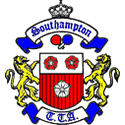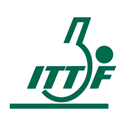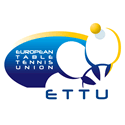Short History of Table Tennis
Late 19th Century – It was in England, in the late 19th century that table tennis made its appearance taking inspiration from lawn tennis, the first players belonged to  middle-class Victorian society. The first game would have been played using a champagne cork as a ball, cigar boxes as bats and books for the net. At that point, table tennis was seen as a mere distraction for the wealthy classes.
middle-class Victorian society. The first game would have been played using a champagne cork as a ball, cigar boxes as bats and books for the net. At that point, table tennis was seen as a mere distraction for the wealthy classes.
1890 – Englishman David Foster attracted by its wide appeal introduced the first game of tennis on a table.
1897 – The first national championships were organised in Hungary.
1899 – Foundation of the first German table tennis club (Ping-Pong-Club Berlin).
1901 – Following a trip to the United States, James Gibb brought back the first celluloid ball, which was a lot lighter than the rubber balls. The ping-pong sound emerged as an acoustic icon. This was also the year the name “ping-pong” was trademarked by British manufacturer J. Jaques & Son Ltd.
1902 – When a moderately good player got a headache during a tournament and bought pills in the pharmacy, he noticed how high the coins bounced on the rubber mat. He bought it, cut it, stuck it on his racket and reached the final. The bat with pimpled rubber was invented.
1921 – It was founded as the Table Tennis Association in 1921. The organisation was known as the English Table Tennis Association between 1927 and 2014 and has been affiliated to the ITTF (International Table Tennis Federation) since 1927. Now Table Tennis England.
1925 – Foundation of the DTTB and first German championships.
1926 – First World  Cup and founding of the ITTF. Fred Perry becomes world champion
Cup and founding of the ITTF. Fred Perry becomes world champion
1929 – Fred Perry becomes world champion again!
1930 – Edgar Snow commented in Red Star Over China that the Communist forces in the Chinese Civil War had a “passion for the English game of table tennis” which he found “bizarre”.
1936 – Establishment of uniform rules by the ITTF. Slow or defensive play at one time was so dominant that at the 1936 world championships in Prague an hour was needed to decide a single point.
1937 – Finger spin was universally banned .
1939 – Richard Bergmann becomes world champion
1948 – Richard Bergmann becomes world champion again. Vera Thomas wins medal.
 1949 – Johnny Leach becomes world champion in Stockholm
1949 – Johnny Leach becomes world champion in Stockholm
1950 – The Japanese achieved extreme speed with the use of foam on their rackets. The rubbers were first banned by the ITTF in 1959 and later re-approved under certain conditions (covering thickness up to 4 mm, top covering without foam). Table Tennis ban ends in the Soviet Union after 20 years-ca 1930 to 1950. The sport was believed to be harmful to the eyes. The ITTF made a bold move by recognizing the Chinese Communist Government. The sport had been popular there for several decades already and this enabled Mao Zedong the countries leader to declare Table Tennis the countries national sport. Richard Bergmann wins in Budapest
1951 – Johnny Leach wins in Budapest
1960’s– -What happened in the 1960’s ?
1971 – The historic visit began on April 10, 1971, when 15 American table tennis players, team officials and spouses crossed a bridge from Hong Kong into China. The U.S. team was diverse, including everyone from the hippie Glenn Cowan to a college professor to a Guyanese immigrant to a pair of high school-age girls. None of the players were particularly accomplished at ping-pong—the U.S. men’s team was ranked 24th in the world at the time—and most had been forced to beg or borrow the money to make it to the championships in Japan. Now, only a few days l ater, they had inadvertently become the most important American diplomats on the planet. A cadre of Western journalists was set to follow their every move, and a few members of the team were enlisted to serve as correspondents for newspapers and magazines. The beginnings of Generation 2 TTC is formed in Fareham by founder members Charlie Childs, Tim Manhire and Andy Walton at a local youth club
ater, they had inadvertently become the most important American diplomats on the planet. A cadre of Western journalists was set to follow their every move, and a few members of the team were enlisted to serve as correspondents for newspapers and magazines. The beginnings of Generation 2 TTC is formed in Fareham by founder members Charlie Childs, Tim Manhire and Andy Walton at a local youth club
1984 – Death of Ivor Montagu- Conventionally educated at Trinity College, Cambridge, he (1904-1984) was the youngest son of Lord Swaythling, the Jewish financier and Liberal peer. But he rebelled against the conventional expectations of his class background by becoming a film director, writer, producer and critic, and by being an active member the British Socialist Party and then the British Communist Party. Montagu was no fan of upper-class field sports, but as a young man played a range of sports, including cricket and tennis, and was a keen follower of soccer. In the 1920s he played a leading role in playing and popularizing table tennis, a role in which his upper-class background was an advantage. He was the founding chairman of the English Table Tennis Association in 1923, wrote and published its rules, and was the first chairman and then president of the International Table Tennis Association from 1927 to 1931, and from 1958 to 1966. Further reading: Ivor Montagu – British Communist film maker’, Security service files, KV 2/598-601, National Archives. See also Nigel West, ‘Verona: the British dimension’, Intelligence and National Security, 17 (1) (2002), pp. 117-34, which argues that encrypted evidence appears to identify Montagu as a Soviet source, code-named Nobility
1988 – Table tennis becomes an Olympic sport.
 1992 – The only European Olympic gold medallist so far has been the legendary Swedish player Jan-Ove Waldner. Nicknamed ‘the Mozart of Table Tennis’, Waldner won the men’s singles at the Barcelona 1992 Olympic Games.
1992 – The only European Olympic gold medallist so far has been the legendary Swedish player Jan-Ove Waldner. Nicknamed ‘the Mozart of Table Tennis’, Waldner won the men’s singles at the Barcelona 1992 Olympic Games.
1993 – How many balls can two players hit back and forth in 60 seconds? The current record is 173 set by Jackie Bellinger and Lisa Lomas in 1993.
1994 – Ping-pong diplomacy was referenced in the 1994 film Forrest Gump. After suffering injuries in battle, Forrest develops an aptitude for the sport and joins the U.S. Army team—eventually competing against Chinese teams on a goodwill tour.
2000 – After the 2000 Olympics in Sydney, the ITTF instituted several rule changes that were aimed at making table tennis more visible as a televised spectator sport. The older 38mm balls were officially replaced by 40mm balls in October 2000. This increased the ball’s air resistance. Game changes from 21 points to 11 points.
2005 – The number of players in the world was estimated to be over 260-million.
 2016 – 552 million people watch Olympic table tennis event in Rio De Janeiro Brazil
2016 – 552 million people watch Olympic table tennis event in Rio De Janeiro Brazil
2017 – The longest recorded match in Table Tennis lasts for 1 hour and 32 minutes in 2017.
2020 – Generation 2 TTC has its 50th birthday celebrations muted by worldwide Covid 19 virus pandemic and club closes down for 6 months.

 December 21st, 2020
December 21st, 2020 











